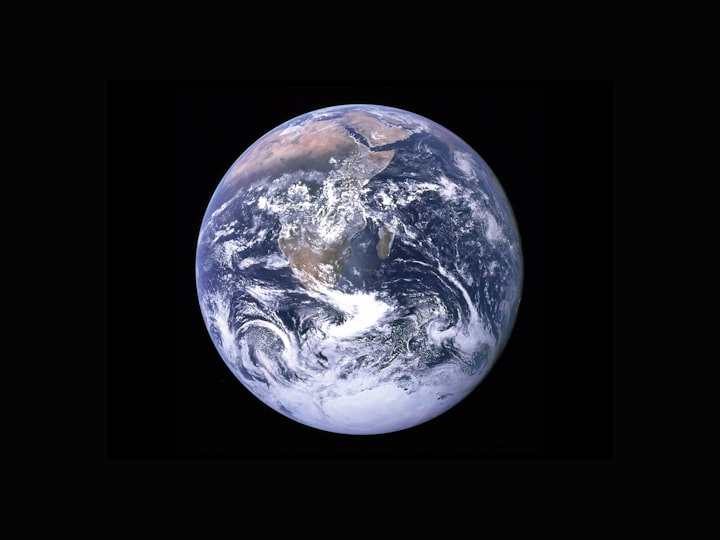A geological mystery "staring" into space is the Sahara's eye.
Give up attempting to create Atlantis; it will never materialize.

The Eye of the Sahara appears to be a massive impact crater perched in the heart of Mauritania's Sahara Desert when viewed from above. This crater-like anomaly, which is composed of a sequence of uniform ripples and spans 50 kilometers (30 miles) in diameter, is in reality completely terrestrial.
The Gemini astronauts utilized this amazing ancient geological feature as a landmark back in the 1960s. The Eye of the Sahara, also known as the Richat Structure, was first thought to be a massive impact crater by geologists. Nevertheless, additional research on the sedimentary rock that comprises the central dome has determined that the formation dates to the late Proterozoic, which is roughly 1 billion to 542 million years ago.
It's important to note that some people still think the building is the ruins of the long-lost metropolis of Atlantis because of its circular shape, which is supposed to mimic the region that Plato described. However, we won't be discussing that theory here.
The structure most likely developed as a result of a process known as "folding," which produced a symmetrical anticline that is Folding happens when sedimentary rock is squeezed by tectonic pressures operating from both sides; if the rock is too cold and brittle, it will fracture, but if it is warm enough, it will produce a fold. Anticlines are folds that form upward, whereas synclines are folds that form downward.
But in a 2014 study that was published in the Journal of African Earth Sciences, scientists put forward a completely different theory of how the Eye formed. According to some theories, the existence of volcanic rock may indicate that molten lava was once forced to the surface, forming the dome shape, and then eroded into the rings that are visible today. The report put out the theory that these volcanic formations and tectonic movements could have been influenced by Pangaea's breakup.
Rock that is both igneous and sedimentary makes up the structure. Fine-grained rhyolite and coarse-crystalline gabbro rocks that have undergone hydrothermal alteration are revealed via erosion across the structure's surface. Different rock types present in the rings erode at different rates, resulting in surface patterns with varying colors. Megabreccia, which are large, sharp-angled chunks of sedimentary rock, add to the formation's whirling, colorful abnormalities.
Ring dikes, alkaline volcanic rock, and a limestone-dolomite shelf with kilometer-wide breccia are all found in the dome's center. Since its discovery, the Eye's intricate geological structure has baffled and intrigued geologists, and it is today regarded as one of the most remarkable geological phenomena on the planet. As a result, the International Union of Geological Science (IUGS) designated it as one of the first 100 geological heritage sites in 2022.
We will have to settle with satellite photos for the time being to appreciate the Eye of the Sahara's magnificence because of its immense size, which makes it best observed from very high altitudes (ideally space).
The oldest earth science field is stratigraphy, which offers a framework for understanding the biological and geological evolution of our planet as well as for charting the passage of time from Earth's formation to the present. During the Renaissance, when artists rediscovery and applied perspective to landscapes, scientists like Leonardo da Vinci (1452–1519) started studying the chronology and order of geological occurrences. Nicolaus Steno (1638-1686), a Danish polymath, invented the idea of superposition and illustrated the horizontal continuity of strata in sedimentary basins. However, a century later, Giovanni Arduino (1714–1795) used super-positioning to chart primary, secondary, and tertiary successions in mountain belts, expanding on the work of Johann Lehmann (1719–1767).
During his studies in England and Wales, which resulted in the publication of the first geological map in 1815, William Smith (1769–1839) introduced the idea of "Correlation by Fossils," adding a crucial component to the stratigrapher's arsenal. James Hutton (1726–1797), whose comprehension of the significance of nonconformities at the Scottish locations of Siccar Point, Arran, and Jedburgh, stated that there was "no vestige of a beginning, no prospect of an end," added the dimension of deep time. Thus, the Earth was exceedingly old.
Stratigraphy consists of several essential elements. Units based on rocks are established in lithostratigraphy. Correlation is based on biostratigraphy, which uses zone fossils and can currently be studied with a variety of quantitative methods. The classification of geological time into manageable intervals concerning type sections in the field, such as Global Stratotype Sections and Points (GSSPs), is known as chronostratigraphy, or global standard stratigraphy. Milankovitch cycles and cyclical alterations in the chemical and physical characteristics of rock successions are connected via cyclostratigraphy. Furthermore, sequence stratigraphy can offer more sophisticated frameworks for comprehending geological and biological evolution. The geochronome experiment is based on precise time. Chronostratigraphy is calibrated by this and orbital-tuning; the dates provide rates of biological and geological processes over deep time.
This section features information about almost thirty amazing geological places, each of which demonstrates a distinct moment in the planet's history. Numerous of these occurrences altered Earth's historical trajectory. Among the oldest places covered are evidence of early life in the Archean Barberton Mountains, the Great Oxygenation Event's legacy, the Ediacara Biota, the Cambrian Explosion in the isolated mountains of Peary Land, and the Great Unconformity in the Grand Canyon. The following three vignettes depict three global stratotypes: The first GSSP to be approved was for the base of the Devonian System; study on the end Permian extinctions has focused on the GSSPs for the base of the Triassic System and the Changhsingian Stage (Permian).
the "Great Dying" The Meghalayan Stage's highest GSSP was determined in the unique medium of a stalagmite, coinciding with a nearly worldwide drought that destroyed entire civilizations.






Comments
There are no comments for this story
Be the first to respond and start the conversation.